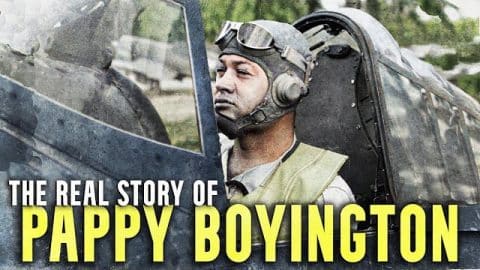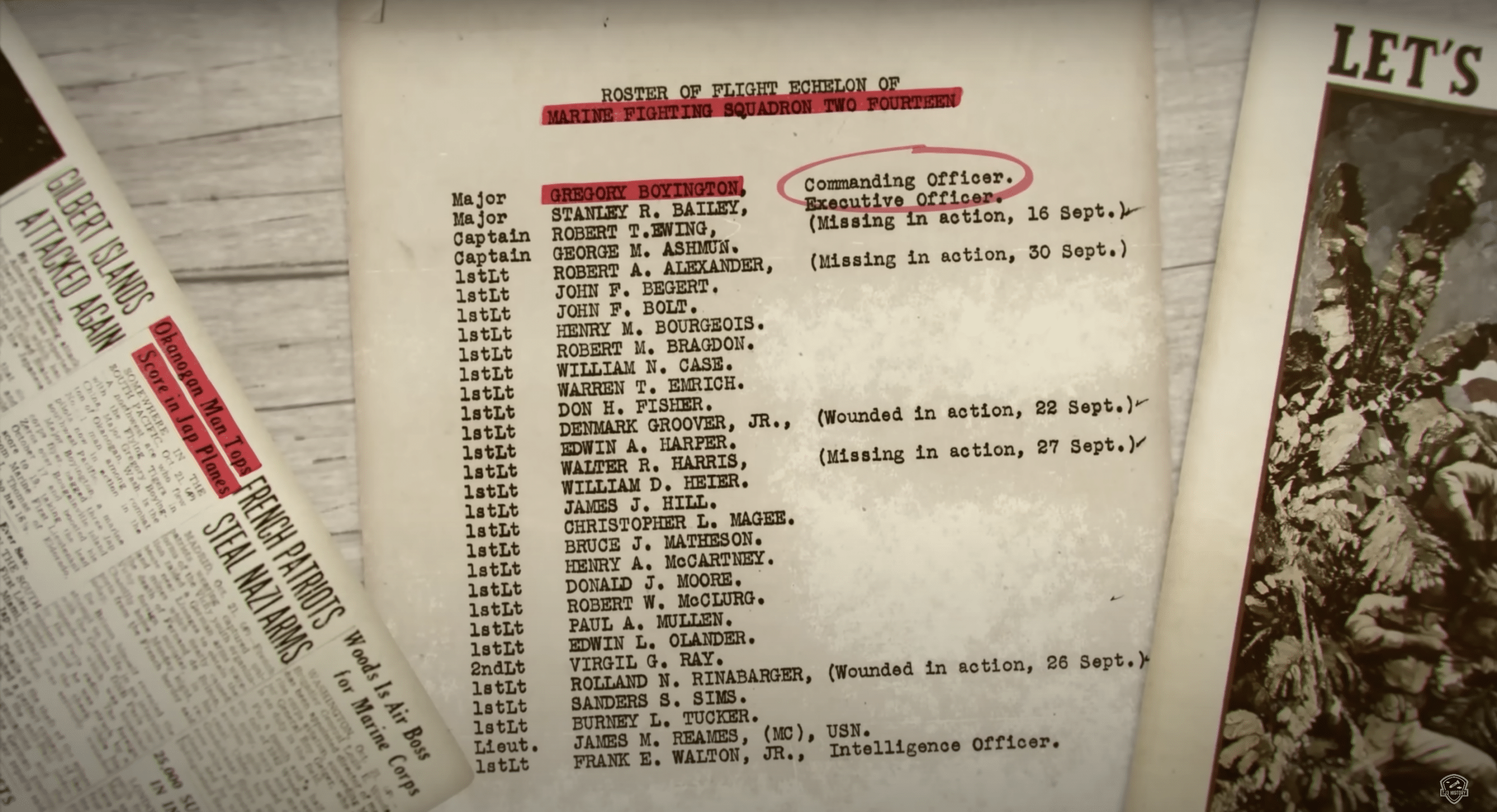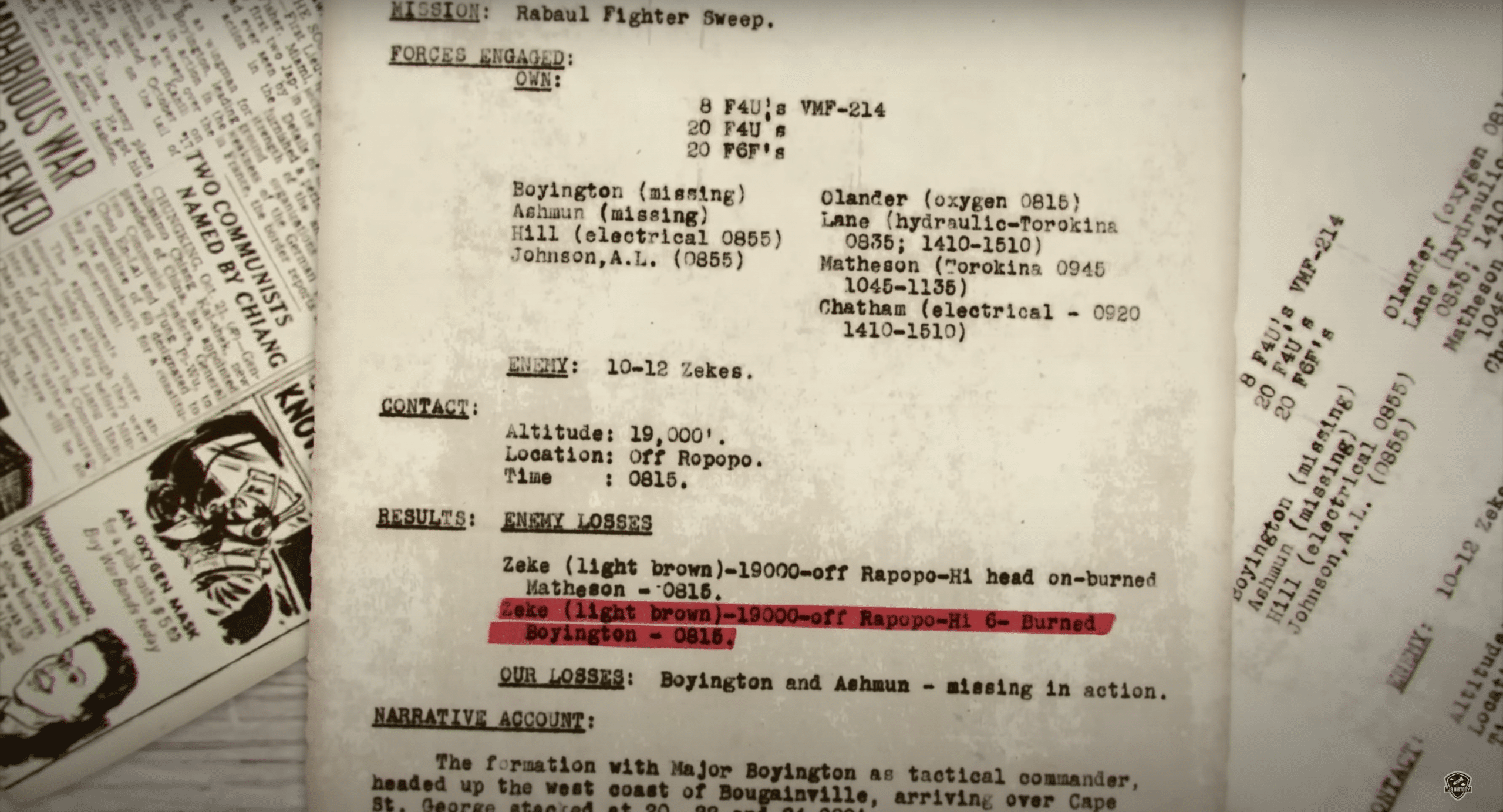The Real Story of Corsair Legend Gregory “Pappy” Boyington

YouTube ./ TJ3 History
The famous F4U Corsair ace Gregory “Pappy” Boyington had quite a career in World War 2. During the war, the legendary pilot managed to become the leader of a Marine Fighting Squadron and dominated the air battles over the Pacific. Here’s how his career started:
Starting Out
In 1934, a 22-year-old Gregory joined the aviation cadet training program but was denied since married men were ineligible.

While many would have given up, he used his father’s name, “Boyington,” to reapply to the program. Back then, Pappy was still using his mother’s last name.
First Kill
After flying with the Marines for a couple of years in the States, he would later join the American volunteer group in China most commonly known as “The Flying Tigers,” giving him his first taste of combat in a P-40 and would score his first confirmed kill over a Japanese bomber.

In just a short period, he would be given command over his own flight, proving he was a skilled pilot.
The Black Sheep
In the summer of 1942, Boyington rejoined the Marine Corps and took a Major’s commission. Around this time, he began to train in a new aircraft the F4U Corsair – the new premiere fighter of the Marines.
On September 1943, he was sent to be the leader of the Marine Fighting Squadron 214 and would fly on Henderson Field in Guadalcanal. This squadron would eventually call themselves the “Black Sheep.”

This squadron would be given few reliable planes and no mechanics – assembled from random squadrons all over the Pacific. The squadron also called Boyington, “Pappy,” because of his age, which was 30 years old at that time and a decade older than the other pilots in the squadron.
Final Mission
On his last mission on January 3, 1944, he was able to shoot down three Japanese planes before he was shot down in Rabaul Harbor, New Britain.

He had gone far too low beneath cloud cover and lost contact with his wingmen, isolating him. Zeroes were also pursuing him, but at this point, Boyington traded his speed and altitude to score more kills. The Zeroes fired on his aircraft until it gave out.
Boyington had no choice but to bail out, and he was picked up by a Japanese submarine and transported into a prison camp in Japan.
Back from the Dead
His fate was unknown; he was awarded the Medal of Honor in 1944, which was assumed as a posthumous decoration at that time. It was later found out that Boyington was able to down a Zero, making his kill count 27.
Despite the grueling 20-month internment as a POW, Pappy was fueled with the drive to clarify the records. He had shot down two more Zeroes that day, making him the first American aviator to pass Rickenbacker’s milestone. Without his own report, he knew that no one would ever know. The original combat report listed him with only one kill one day as it’s the only kill his wingmen saw.

After Japan surrendered, Boyington was eventually liberated. News soon spread that the American hero was alive, back from the dead. Years after the war, he would eventually publish a memoir, Baa Baa Black Sheep, which would eventually turn into a popular TV series.




















